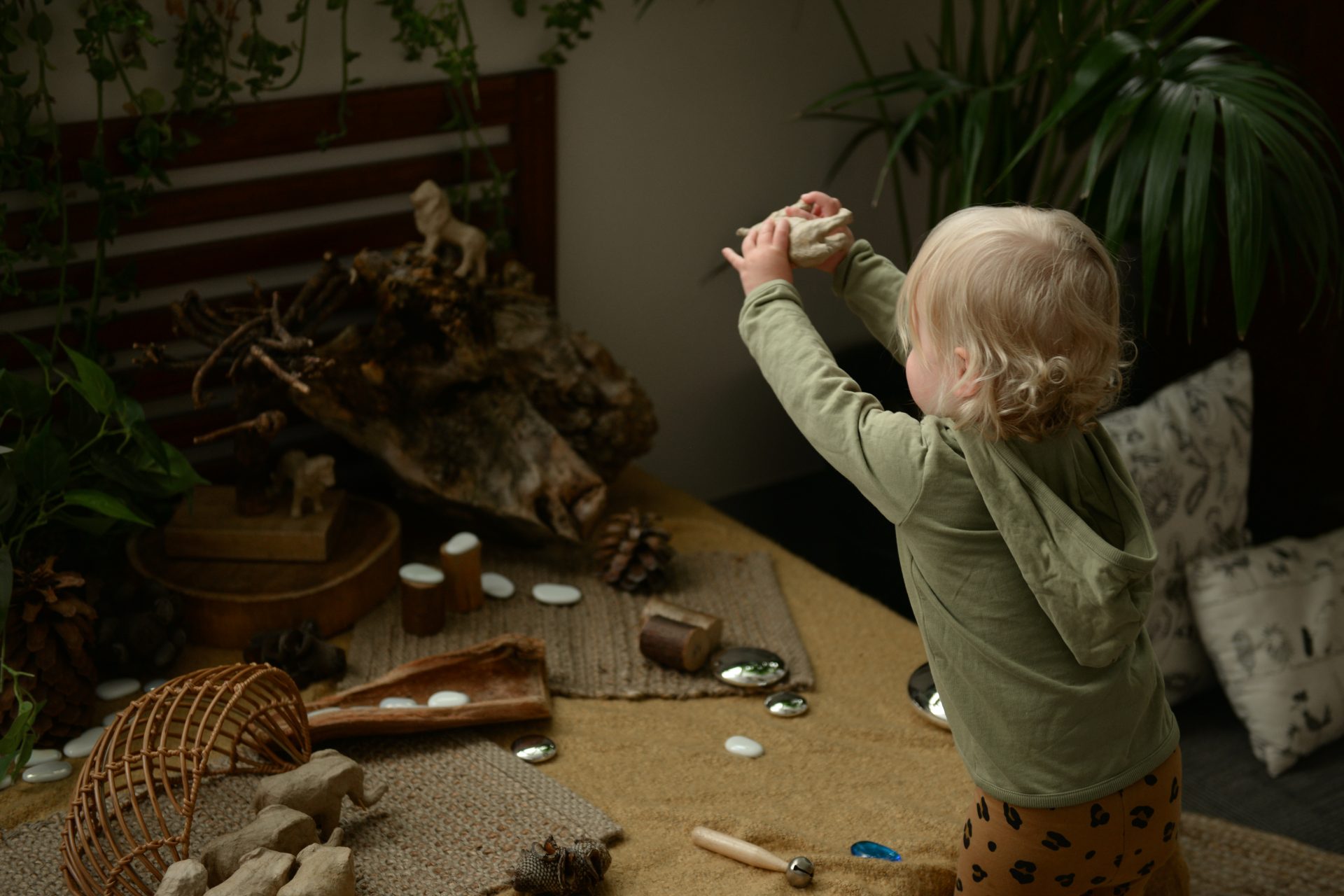
Messy play brings a multitude of benefits – and, of course, children love it! Getting down and dirty isn’t just about creating chaos (although the aftermath can take a bit of clearing up), it crucially plays an integral part in many areas of childhood development. That’s why highly successful early learning curriculums, such as the Reggio Emilia approach, integrate this important method into everyday childcare life.
What is Messy Play?
Messy play is so much more than disorder. It’s about getting hands-on with a wide variety of textures and materials – and, in doing so, stimulating the senses. You might also hear it referred to as sensory or adventure play.
Examples of messy play include:
- Playing with sand.
- Squishing clay.
- Making mud pies.
- Sticking glitter and shiny shapes.
- Finger painting.
- Sorting stones into piles.
- Planting seeds.
- Pouring water.
Why Messy Play is So Important to Childhood Development
In early childhood, the brain is constantly developing and creating new neural connections. The more this is stimulated, the better. Touch is such an important sense - and using the hands and fingers to feel and manipulate different and materials helps promote this. But the benefits go much, much further than just stimulating this single sense.
Messy play contributes to so many areas of development, including:
- Improving fine motor skills: Using the hands and fingers (and feet and toes, if you like) helps develop dexterity and hand-eye coordination. It also promotes vital muscle development.
- Tactile understanding: Learning the differences between materials and what to expect before they’re touched. Cool stones, light-as-air foam, rough material, the squish of mud – messy play plays a huge role in discovering the delightful contrast or similarities of how things feel.
- Smell and taste: Children explore new experiences through all their senses – including putting them in their mouth. Using food items, such as jelly or pasta, to play with and taste fosters important connections between the senses.
- Social development: Experiencing messy play with others is a great way to promote social interactions. Talking about shared experiences, surprise discoveries, pushing each other to try something new… These are all powerful methods of how children learn the art of communication.
- Promoting curiosity and learning: Every new exposure leads to further discovery. The joyful realisation that clay changes shape as it squishes through your fingers or the amazement of seeing that a stone sinks in water, but paper floats, encourage further exploration and questioning. It helps build a foundation of curiosity and a love of learning that will be carried forward as the child grows.
- Building confidence: Messy play helps children learn new skills – and this is driven by what interests them. As they explore sensory play, the confidence to try new things and investigate pathways increases. In turn, this lays the building blocks on which determination and responsibility can grow.
Integrating messy play into everyday life is great for both the child and the caregiver. All it takes is a little bit of preparation, such as wearing appropriate clothes and having the materials at hand, for a successful outcome.
At Evoke Early Learning, messy play is an integral element of our toddler and kindergarten programmes. Enrolling your child is a simple process – one that generally commences with booking a tour and seeing our great team in action.
Explore our childcare philosophy and contact us today for more information.

Tracey is a highly qualified educator and administrator and brings a strong combination of academic achievement, extensive work experience in the education and business sectors as well as drive and passion to her role as General Manager of Operations at Evoke Early Learning.
Tracey has a Master of Education and an Advanced Diploma of Business and holds VIT Dual Registration to teach in Early Childhood and Primary School settings. She’s also a VIT Trained Mentor Teacher and has worked in ECEC settings as a Director, Educational Leader and as a Victorian Senior Area manager. Her recognition as a state finalist in the recent Director of the Year Awards is testament to her achievements in the early education sector.
Her extensive work experience also included a stint as Head of Curriculum at the Royal Children’s Hospital Education Institute and positions as head of ICT at a number of large primary and secondary schools. Tracey is also experienced in not-for-profit sessional kindergarten settings and long daycare environments, so she has a deep understanding of what’s required to support the needs and expectations of young children, educators, parents and caregivers.
Tracey is responsible for operational management at Evoke Early Learning’s Clayton centre in Oakleigh East and their Albert Park centre in South Melbourne and is deeply committed to leading and driving effective and sustainable service delivery throughout the company.
Tracey is passionate about making a meaningful difference to young children, their parents and the wider community and under her expert guidance, Evoke Early Learning is continuing to raise the bar in quality early education and childcare.


